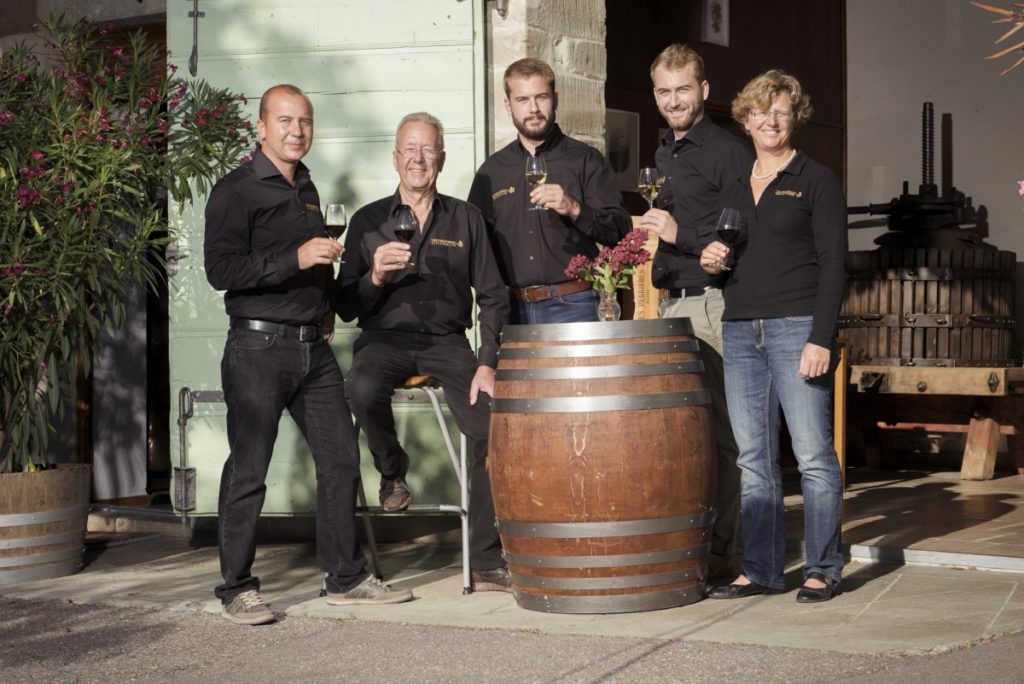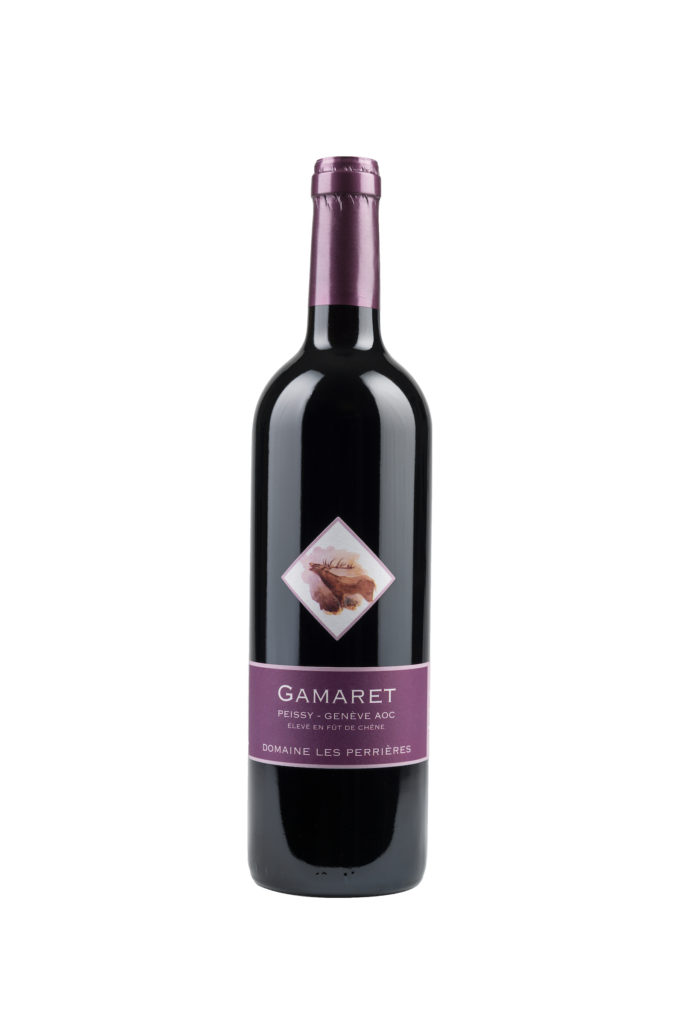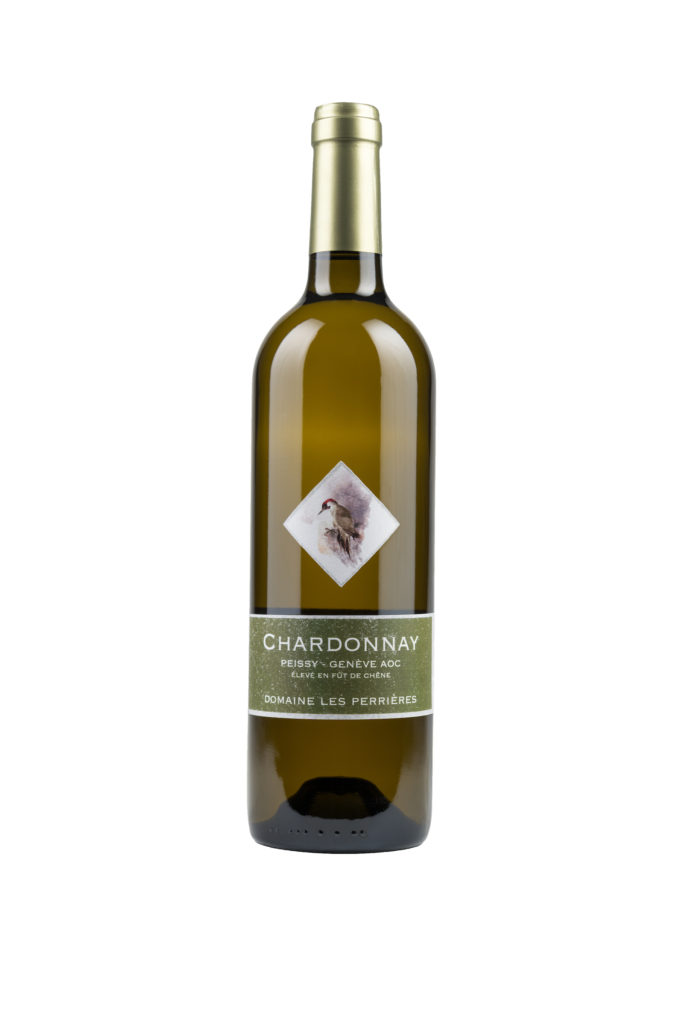Gamaret to Divico: Swiss wine rules at home
You are so wrong, Orson Welles. There is more to Switzerland than brotherly love, peace, and the cuckoo clock. There is wine. But to know Swiss wine, you need to visit the country. Here is why…
There is something about exploring a country through its wine for the first time. As a seeker, there is that mint-new thrill of tasting new wines, understanding the complexities of its terroir and market.
Switzerland is no different. In fact, the thrill of discovery is greater given that so little is known about it worldwide. To quote one of the winemakers I met: “We are the wine world’s best-kept secret.” Big words, but quite true. Most people have heard of Swiss timepieces, chocolate, and cheese. Far fewer have been known to drink Swiss wine… it is not easy to find on international shelves.

The Rochaix family of Les Perrières
Before you flip the page, here are a few facts to mull over first. This tiny country of 8 million inhabitants has a yen for more than their own excellent cheese and chocolate. In fact, they love their wine. So much so that only 1% of their production is exported, which is why you haven’t seen many Swiss wines on the shelves. Switzerland is in fact in the top 10 countries of the world in terms of wine consumption per capita. And they grow a very large number of grapes across their wines regions… which includes Geneva. In fact the vineyards around Geneva house some major producers and grow a large number of grapes, of which Gamay (red) and Chasselas (white) are the most popular.
On the sidelines of the International wine comptition Concours Mondiale de Bruxelles held in Aigle, the jury members were taken around to visit several of the wine regions, taste the wines and meet the producers. One such visit was to Les Perrières, a family-run winery on the outskirts of Geneva. the Rochaix family has been in charge since 1794.
Currently, the 8th generation (three siblings, Frederic, Fabian and Sandrine) is running the business, where they produce approximately one million litres of wine a year.
An appetite for fine wine
Commercial director of Les Perrières and older son of current owner Bernard Rochaix, Frederic Rochaix, proceeded to give me a very succinct and informative introduction to the wines of Switzerland.
“Wine consumption is certainly part of our culture,” he said. “The Swiss consume three times the national production and thus we import a lot from our neighbouring countries, mainly Italy and France, followed by Spain. Efforts are made to export our wines abroad but this is a difficult task as we lack reputation internationally and distributors often fear to reference wines where little demand has manifested itself. Nonetheless, some of the larger Swiss wineries do distribute in Asia and North America with a high end, niche positioning due to their rarity.”
Crossbred, disease-resistant grapes
I was curious about the very large numbers of grapes grown. Switzerland doesn’t have a single native variety save Chasselas, the ubiquitous local white grape. The main regions of Vaud, Valais, Geneva, and Ticino (nearer Italy), a range of grapes are grown, from international favourites like Pinot Noir, Gamay, Chardonnay, Pinot Gris to some rarer ones, the disease-resistant, blood-red Divico, Petite Arvine, Gamaret, etc. “You have a considerably large portfolio yourself,” I asked Rochaix (they produce 29 labels from 17 grape varieties) as we moved from room to room, sipping and spitting a range of white, red sparkling wines, ending up with a rather delicious dessert Muscat matured in oak casks.
That’s right,” he agreed. “Switzerland has a very diverse terroir as well as climate across the country. This has led to significant grape variety diversity with a number of indigenous, international and more modern crossbreeds establishing themselves with success. The canton of Geneva is recognised as being the most diverse canton with many French varieties, such as Chardonnay or Sauvignon Blanc, thriving here and the Swiss crossbreed, Gamaret, also being widely adopted. The canton of Vaud is widely recognized for its wonderful Chasselas which grows on the lakeside and hillsides of the breathtaking UNESCO World Heritage site of Lavaux. The largest Swiss wine producing canton, Valais, has a number of fantastic indigenous varieties as well as international staples, such as Syrah and Cabernet Sauvignon, which thrive in this terroir. The warm and sunny, Italian-speaking canton of Tessin is well known for its Merlot. The cooler and dryer canton of Graubünden for its Pinot Noir….”

Gamaret…. 
and Chardonnay: Hand etched pictures of wildlife on every label
Even within Swiss wine regions, there is depth and difference. What would you say are the pros and cons of such diversity, and what does each bring to the table? I asked.“Diversity is certainly a plus for visiting wine amateurs who can enjoy shifting vineyard landscapes and grape varieties from one canton to the next, agreed Rochaix. “It does, however, pose some difficulty in establishing a reputation at the national level. Each canton has its specialties, terroir and, in some cases, adapted methodologies. Given the size of the already small Swiss national terroir, it becomes very difficult for each canton to market itself individually, internationally. Other small European wine producing countries have managed to position themselves and create a name around one variety, this is challenging for Switzerland, although attempts are now being made to push the Chasselas forward as this identifying product. I remain convinced that each region brings something unique to the table, each holding its own merit,” he said.
Swiss baby: Chasselas
So tell me more about Chasselas, I asked him. “What qualities according to you, make it so special? How do you explain its dominance in Switzerland over other cool-weather grapes, for instance, the Pinots and Riesling?
(more…)



